BMW X1 Luggage Test: How much fits in the cargo area?

The third-generation BMW X1 was new for 2023, and much like the previous-generation and unlike most other BMWs, it is based on a front-wheel-drive platform that is beneficial for interior space. The specs say that the X1 has 25.674 cubic-feet of space behind the back seat, which is a degree of specificity that screams “we measured in liters but ran a calculation for you Americans.” By the way, that works out to 727 liters.
That figure would be on the big side for a subcompact SUV like the X1, but BMW has also had a history of throwing out cargo volumes that are completely out-of-whack with the actual amount of space relative other vehicles. As such, I didn’t really know what to expect when I popped the hatch.
At first glance, this does in fact look consistent with other hatchbacked vehicles in the 25.674-cubic-foot range. For the record, the BMW X3 has 28.7 cubic-feet behind its back seat, and judging by the photos found here, I would have to say the difference mostly comes down to height up high, which is less important for baggage.

Before I get to the bags, though, check this out. A spare tire! BMW started getting rid of spare tires in the late 2000s in favor of run-flat tires. That seriously hampered ride quality and raised replacement costs, although there is something to be said for weight savings and packaging.
Either way, spare tires are back at BMW. I guess the company got tired of customer complaints. The X3 can now be had with one, but as I found in that luggage test, the spare tire was never meant to be in that vehicle and is only shoe-horned in by awkwardly raising the floor.
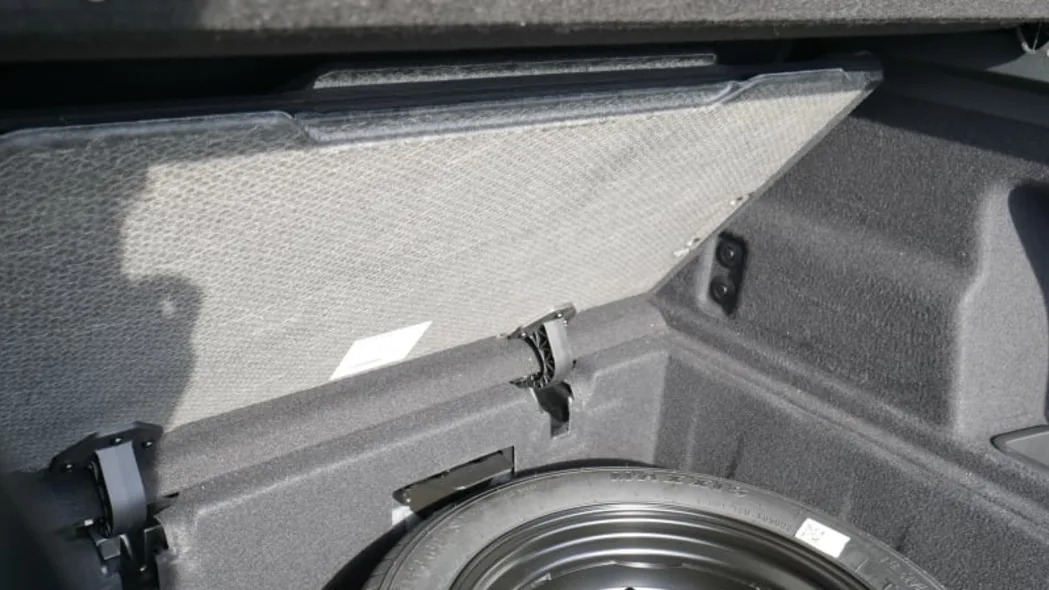
A quick shout-out to the cargo floor itself, which is mounted on hinges that lock into place when in their most upright position. My old X5 had this and it was very much appreciated.
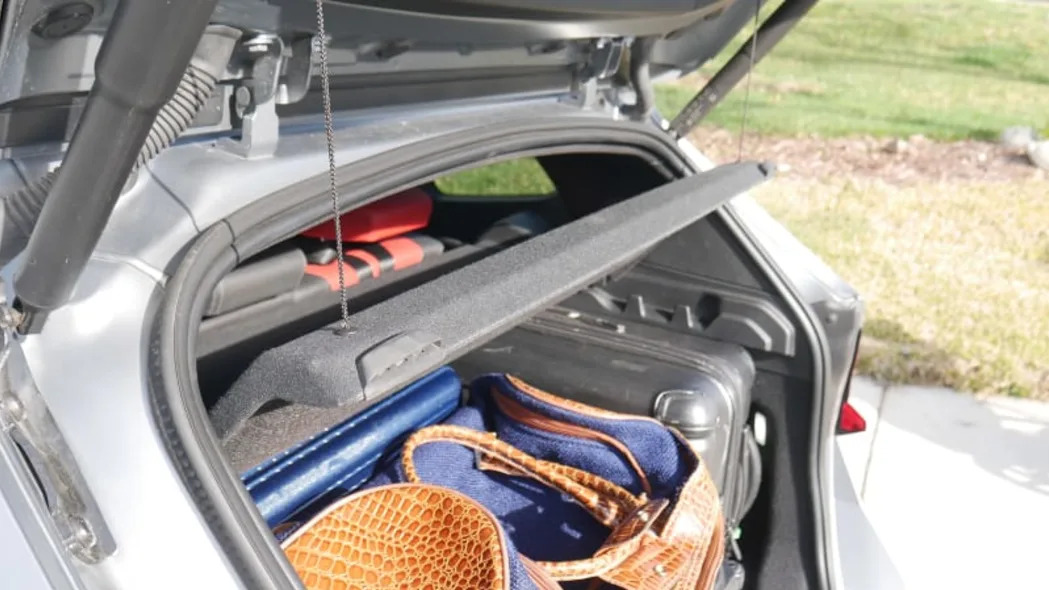
The X1 has a rigid, hatchback-style cargo cover. There’s nowhere to store it onboard, so I will be testing with and without it.
As with every Luggage Test, I use two midsize roller suitcases that would need to be checked in at the airport (26 inches long, 16 wide, 11 deep), two roll-aboard suitcases that just barely fit in the overhead (24L x 15W x 10D), and one smaller roll-aboard that fits easily (23L x 15W x 10D). I also include my wife’s fancy overnight bag just to spruce things up a bit (21L x 12W x 12D).

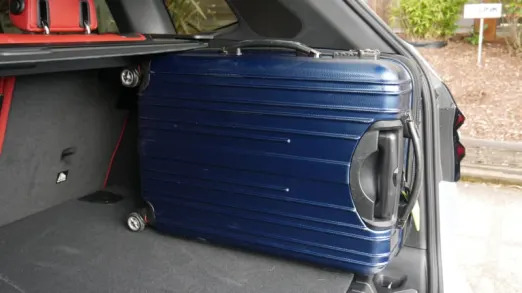
Check out the height difference between the X1 cargo area (left) and the X3’s with the spare tire (right). Those would be my two biggest bags. You can also see how similar the cargo area length is.
OK, let’s fill the area under the cargo cover.
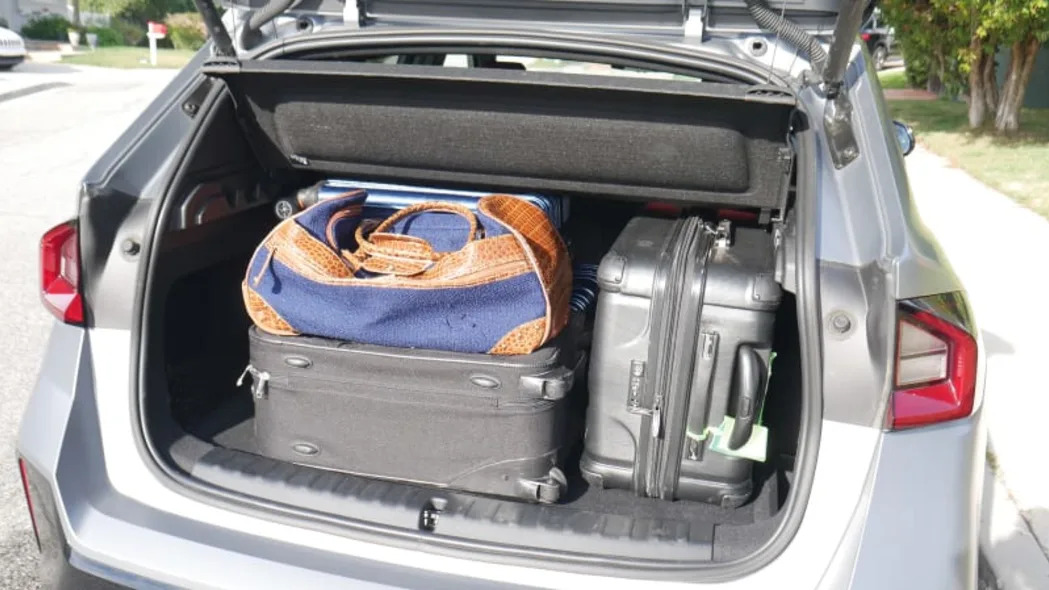
All the bags except one of the medium-sized carry-ons fit. Not bad. In fact, THIS is MUCH better than what the X3 could manage, and it just has a cartridge-style roller cargo cover … that was retracted during my test.
Now let’s take out the cargo cover.
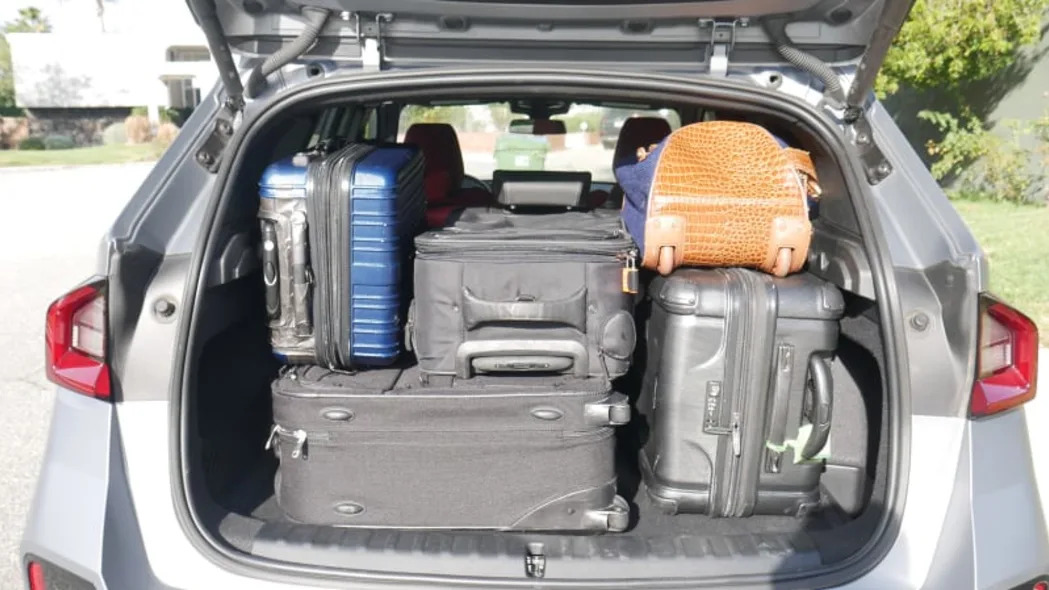
Not surprisingly, all the bags fit. Easily, too, and visibility is just fine. Fancy bag is nice and secure thanks the seat and head restraint in front of it, by the way.
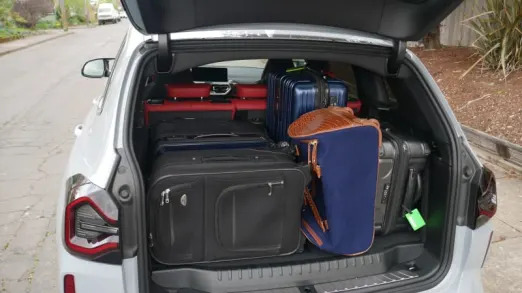
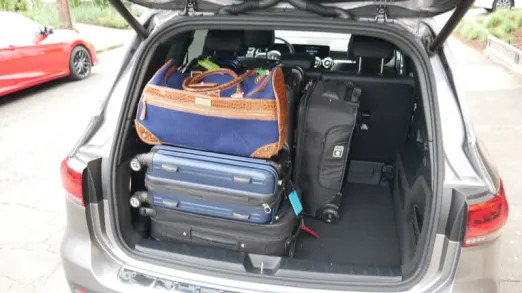
Above left is what the X3 could manage. There is definitely more room present, but the space is awkward. In the end, definitely don’t step up to an X3 from an X1 on the basis of cargo space.
Above right is the exact collection of items in the Mercedes-Benz GLB, which is so voluminous I could also add a 38-quart cooler, an inflatable raft in a box and two additional duffel bags. In other words, the X1 is nowhere close to being the luxury subcompact SUV luggage test leader. However, it blows away the rather pathetic Audi Q3 and is a bit better than the Range Rover Evoque. Considering the class leader is such an over-the-top outlier, being in second place isn’t so bad.
Oh, and it does seem like in this case, BMW’s reported cargo volume is consistent with that of other brands.







